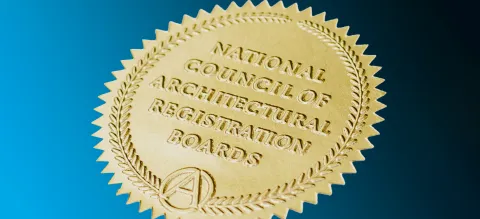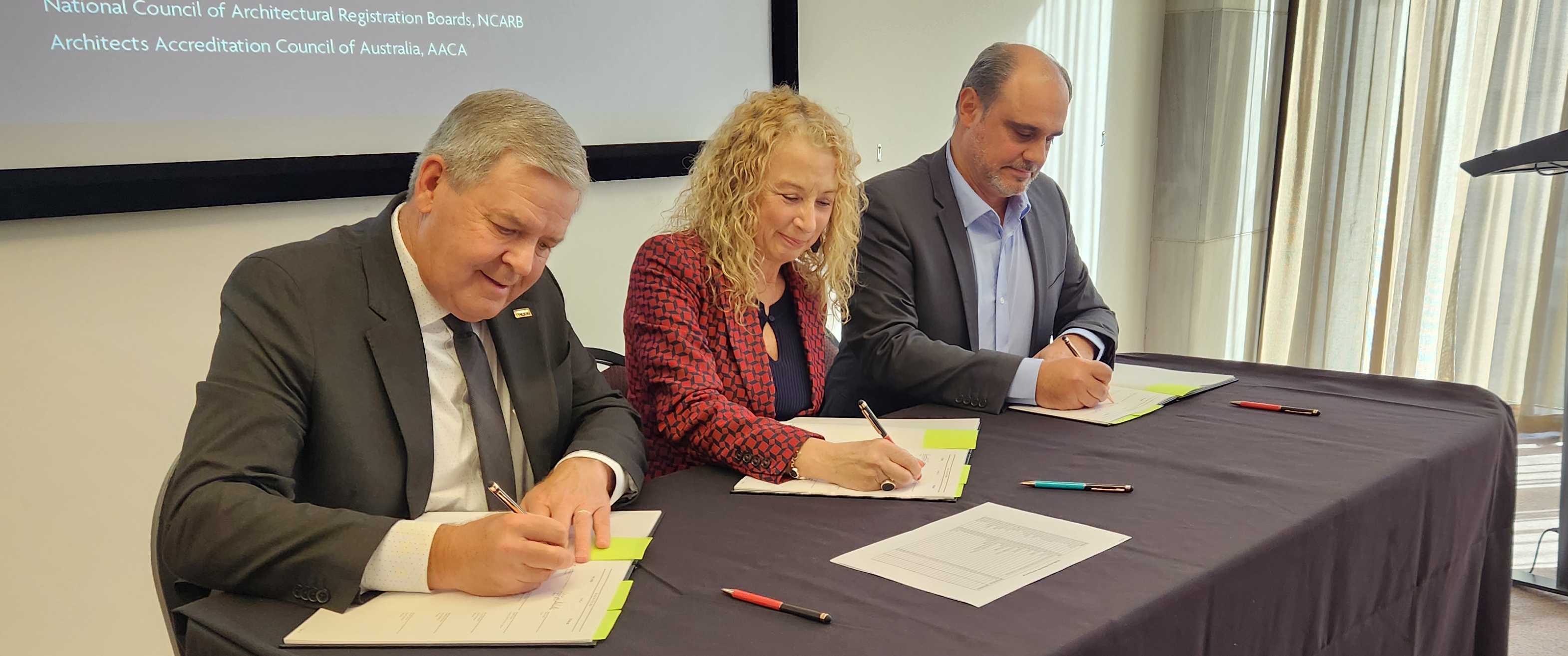Representatives from NCARB, the Architects Accreditation Council of Australia (AACA), and the New Zealand Registered Architects Board (NZRAB) signed a new Mutual Recognition Agreement (MRA) that will expand access to opportunities for international architects.
The new MRA, which will replace the existing agreement between the three countries, goes into effect on November 6, 2024. It addresses common barriers to eligibility for qualified architects interested in pursuing reciprocity, such as extended experience requirements and limited paths to licensure/registration and reciprocity.

Get NCARB-Certified
Did you know? Having an NCARB Certificate gives you the flexibility to apply for reciprocal licensure in all 55 U.S. jurisdictions and aboard.
New Eligibility Criteria
The changes to the eligibility criteria that are reflected in the new agreement include:
- Eliminating the existing requirement that architects must have 6,000 hours of post-licensure/registration experience in their home country
By removing the extensive additional experience requirement, newly licensed architects will now be able to pursue international reciprocity through the agreement. - Accepting architects who obtained their licensure/registration through various pathways
Previously, U.S. architects were required to earn their Certificate through the traditional path, which includes earning a degree from an architecture program accredited by the National Architectural Accrediting Board (NAAB). Under the new agreement, U.S. architects who became NCARB-certified through the Education Alternative and Foreign Architect pathways are also eligible. - Citizenship in the home country is no longer required
Under the original agreement, architects seeking reciprocal licensure were required to be citizens of their home country. The updated agreement waives this requirement.
By making these changes, the three organizations are reducing unnecessary barriers to accessibility without removing the level of rigor needed to protect the public’s health, safety, and welfare.
U.S. Jurisdictional Participation
Because each U.S. jurisdiction is responsible for the regulation of architecture within its borders, each U.S. jurisdiction must individually determine if it will accept the new Mutual Recognition Agreements. Review our list of participant jurisdictions that currently accept the Australia and New Zealand agreement. NCARB will verify jurisdictions’ participation based on the updated agreement over the next few months.
Who’s Eligible to Apply?
To be eligible to apply for reciprocal licensure in Australia or New Zealand, U.S. architects must:
- Be licensed and in good standing in a participating jurisdiction
- Hold an active NCARB Certificate
Before applying, be sure to use the Licensing Requirement Tool's “Reciprocal Licensure” tab to ensure the jurisdiction in which you are seeking licensure is participating.
History of the Agreement
The mutual recognition agreement between Australia, New Zealand, and the United States was launched in 2017. The agreement is based on an assessment of similarities in architecture licensing standards established by NCARB for its member jurisdictions, as well as the requirements for registration in Australia and New Zealand.
This new agreement is the result of research and collaboration between NCARB, the AACA, and the NZRAB and was ratified by NCARB’s membership at the 2024 Annual Business Meeting.
Learn more about pursuing reciprocal licensure in Australia or New Zealand through the updated MRA.
